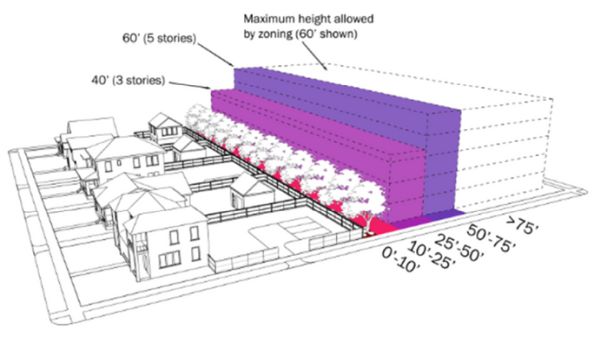
The City of Austin for a while now has been considering changes to compatibility zoning regulations to hopefully address housing issues and costs in the region. Compatibility rules manage the transition between single-family neighborhoods and taller and denser developments, by regulating things like building heights, screening, and design in the buffer zone.
Austin's compatibility regulations are among the strictest in the nation. The regulations aim to protect single-family neighborhoods, but as usual the law of unintended consequences hurts our housing affordability by reducing supply.
Here are some of the highlights of the city staff's recommendations:
- Reduce compatibility zone from 540 feet to75 feet
- Allow more height and flexibility within that 75-foot buffer
- Allow exemptions such as for transportation-oriented development and small-scale multifamily
- Reduce the number of properties triggering a buffer zone
A city analysis estimates that these changes, among others, could increase housing by an estimated 71,492 units.
Understanding these zoning changes can shed light on the city's efforts to address some of our housing affordability concerns. Stay informed to see how these changes may shape the future of Austin's real estate landscape.
The content of this article is intended to provide a general guide to the subject matter. Specialist advice should be sought about your specific circumstances.

